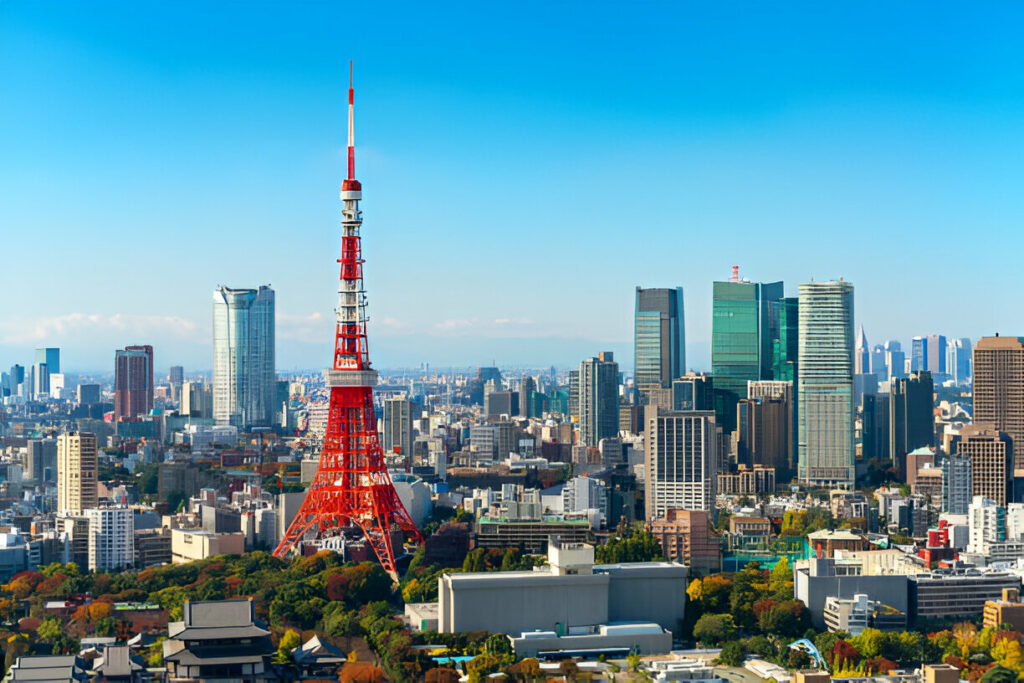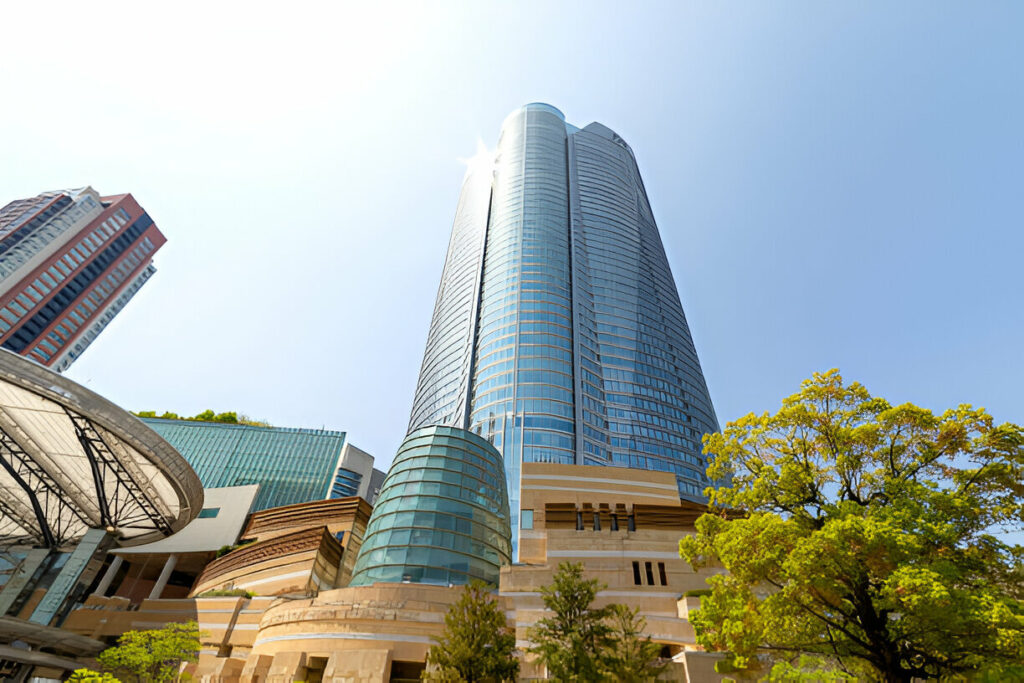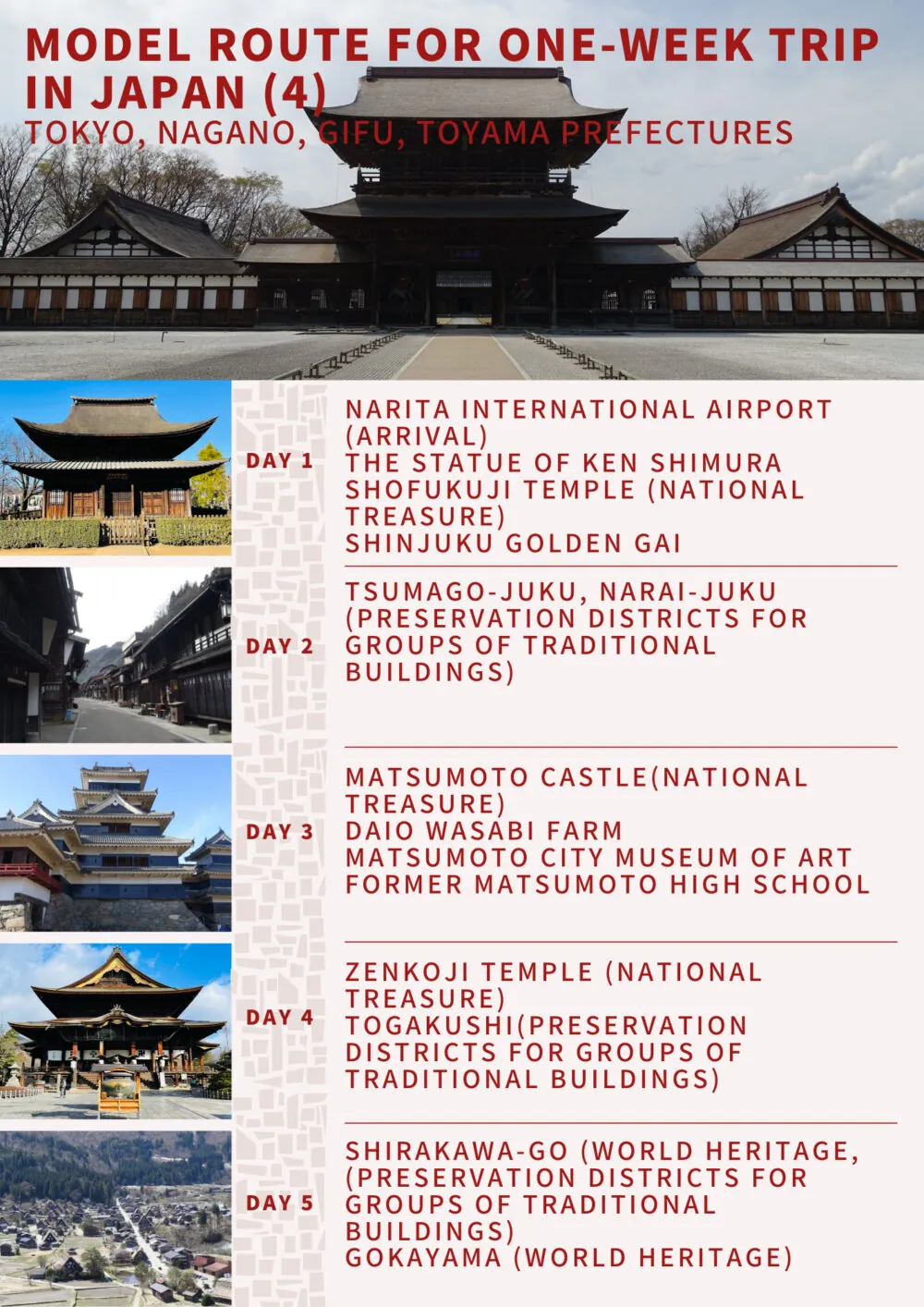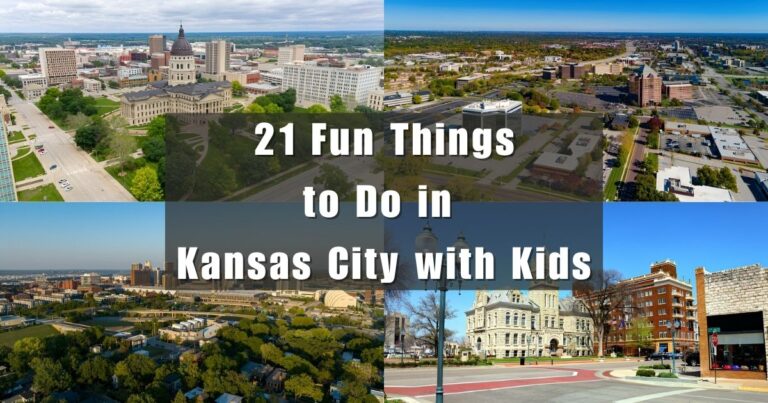5 Days in Japan Itinerary: Perfect Blend of Tradition, Modernity, and Nature
Japan is a dream destination for many travelers, an extraordinary blend of ancient traditions, modern technology, and breathtaking natural beauty. In just five days, you can immerse yourself in the country’s contrasting worlds, from the neon-lit streets of Tokyo to the peaceful temples of Kyoto, and the stunning natural beauty surrounding Mount Fuji. While five days may seem too short to explore everything Japan has to offer, a well-structured itinerary will give you an exciting and memorable taste of this fascinating country. With planned visits to Tokyo, Kyoto, and Mount Fuji, this itinerary is perfect for first-time visitors who want to experience the breadth and richness of Japan.
Let us explore a five-day itinerary that offers a balanced experience with cultural, historical, and modern activities. Additionally, it’s essential to mention the convenience of using a Japan Rail Pass, a cost-effective way for tourists to travel efficiently between cities.
Day 1: Exploring Tokyo – A Blend of Tradition and Modernity
From the moment you arrive in Tokyo, Japan’s bustling metropolis, you’re thrust into an exciting world where ancient traditions and futuristic advancements coexist harmoniously. Day 1 explores some of Tokyo’s most iconic sights, from traditional temples, to its renowned street culture, and the geek haven of Akihabara.
Morning: Tsukiji Outer Market and Toyosu Market
Kick off your Japan adventure with a quintessential experience—breakfast at Tsukiji’s Outer Market. Although the wholesale fish operations were relocated to Toyosu in 2018, the Tsukiji Outer Market continues to thrive as a lively hub of fresh food stalls. Here, sushi lovers can indulge in a traditional breakfast by sampling some of the freshest seafood in the world.
Afterward, catch a glimpse of the tuna auctions at Toyosu Market, the world’s largest seafood market. Be sure to arrive early to view the fishmongers bustling through their daily auctions. Viewing platforms require reservations, so book in advance.
Midday: Tokyo Tower and Zojoji Temple
No trip to Tokyo is complete without a visit to the Tokyo Tower, an iconic structure offering sweeping vistas of the city’s skyline. Built as a communications tower in 1958, the Tokyo Tower stands 333 meters tall and provides a unique perspective of both urban life and, on clear days, Mount Fuji in the distance.

Nearby, you’ll find Zojoji Temple, a serene Buddhist temple deeply connected to the Tokugawa shogunate. Against the backdrop of modernity, the temple serves as a reminder of Tokyo’s deep-rooted spiritual traditions.
Afternoon: Asakusa and Sensō-ji Temple
For a taste of old Tokyo, head to Asakusa, home to the famous Sensō-ji Temple, Tokyo’s oldest and most important Buddhist temple. Before reaching Sensō-ji, stroll down Nakamise Street, a traditional shopping street that’s been serving locals and visitors for centuries, filled with souvenir shops and food stalls offering traditional snacks like Ningyo-yaki (red bean cakes).
Upon arriving at Sensō-ji, you’ll immediately notice the imposing Kaminarimon Gate and the 5-story pagoda, all set in the calming atmosphere of incense burning and prayer rituals.
Evening: Akihabara – The Otaku Paradise
As night falls, dive headfirst into Tokyo’s electric and neon-soaked district: Akihabara. Known as the tech hub of Tokyo and the heart of otaku (anime and gaming) culture, Akihabara promises an unforgettable experience for electronics enthusiasts and gamers alike.
Browse anime shops, electronics megastores, and themed cafes where cosplay is the norm, such as maid cafes or arcades immersed in the latest gaming trends. This is the perfect place to pick up quirky gadgets or hard-to-find manga and anime merchandise.
Day 2: Kyoto – Discover Japan’s Ancient Traditions
Kyoto, the former imperial capital of Japan, embodies the heart and soul of traditional Japanese culture. With its meticulously preserved temples, shrines, and geisha culture, one day in Kyoto will offer a journey through time.
Morning: Fushimi Inari Shrine
Start your day with an ethereal experience: a visit to Fushimi Inari Shrine, one of Japan’s most iconic sights. Famous for its thousands of vibrant red torii gates, the shrine is dedicated to the Shinto god of rice and prosperity, Inari. Embark on a journey through the extensive trails that wind up Mount Inari, passing smaller shrines, fox statues (Inari’s messengers), and even tea houses.
Opt for a leisurely walk or hike all the way to the top, which takes about two to three hours. For those with time constraints, consider walking halfway to experience the torii tunnel’s magic.
Midday: Kiyomizu-Dera Temple and Higashiyama District
Next, make your way to the stunning Kiyomizu-Dera Temple, perched on the hillside overlooking Kyoto. The temple’s main hall, which rests on a wooden stage, offers panoramic views of the city and the surrounding forest, especially beautiful during cherry blossom season or autumn foliage.
After admiring the beauty of Kiyomizu-Dera, take a stroll through the Higashiyama District, Kyoto’s well-preserved historic neighborhood. As you meander along the narrow stone streets, you’ll encounter charming tea houses, artisan shops specializing in traditional crafts, and delightful street food.
Afternoon: Gion District – Geisha Culture
Immerse yourself in the elegance and mystery of Kyoto’s Gion District, the city’s famous geisha quarter. As you walk through Gion’s cobbled streets lined with machiya (traditional wooden townhouses), you might encounter geiko (Kyoto’s term for geisha) in their elegant kimonos or stop by one of several tea houses offering authentic cultural experiences such as a tea ceremony.
For deeper insight into geisha culture, consider arranging a tea ceremony at one of the local teahouses. With graceful performances and meticulous detailing, it’s an experience that connects you with Kyoto’s rich heritage.
Evening: Pontocho Alley for Dinner
Wrap up the day at Pontocho Alley, a narrow alleyway beside the Kamogawa River filled with traditional restaurants. The atmospheric setting and riverside views make Pontocho a coveted spot for dining. Here, you can sample kaiseki, a traditional multi-course meal that highlights seasonal ingredients chosen with exceptional craftsmanship.
Day 3: Mount Fuji Adventure – Nature and Scenic Beauty
Leave the bustling cities behind and head toward the inspiring natural beauty of Mount Fuji. As Japan’s most iconic natural landmark and symbol of cultural significance, spending a day getting up close to Fuji-san should be at the top of the itinerary.
Morning: Travel to Mount Fuji Area
Using your Japan Rail Pass, board the Shinkansen (bullet train) early in the morning for your journey to the Mount Fuji area, particularly the Fuji Five Lakes region, which provides the best vantage points for Fuji viewing.
You can choose to disembark at Kawaguchiko Station—which serves as the gateway to the Fuji-san experience—or opt for a guided day tour arranged in advance. Even on the train ride, you can catch glimpses of Fuji’s symmetrical beauty on a clear day.
Midday: Lake Kawaguchi and Chureito Pagoda
Once you arrive, begin your exploration with a leisurely visit to Lake Kawaguchi, one of the Fuji Five Lakes. Positioned north of Mount Fuji, this pristine lake offers uninterrupted views of the iconic mountain. Consider renting a boat for a relaxing ride, or simply enjoy the serene ambiance of the lakeside, with Fuji as your dramatic backdrop.
A short trip from Lake Kawaguchi will take you to Chureito Pagoda, a five-story pagoda set amidst lush greenery. Arguably one of the most photographed spots near Mount Fuji, this location combines the beauty of the pagoda with sweeping views of the mountain.
Afternoon: Relax at an Onsen Ryokan
After a busy day of traveling and sightseeing, head to your onsen ryokan—a traditional Japanese inn featuring natural hot spring baths. Ryokans offer a unique opportunity to immerse yourself in Japanese hospitality, known as omotenashi. Most ryokans in the Mount Fuji area overlook the mountain, meaning you can soak in the hot springs with Mount Fuji looming majestically in the distance.
Dinner at the ryokan will likely feature a kaiseki meal, a series of beautifully presented dishes using fresh, seasonal ingredients.
Evening: Sunset Views of Mount Fuji
As the day winds down, you’ll have the chance to witness Mount Fuji bathed in the fiery reds and oranges of sunset. Whether from your ryokan or a nearby viewing point, this is a magical moment that will undoubtedly be one of the highlights of your trip.
Day 4: Back to Tokyo – Modern Art and Shopping Spree
As your trip nears its final stages, return to Tokyo for a day filled with cutting-edge art, Japan’s inimitable fashion scene, and more of the city’s unique historical touches.
Morning: TeamLab Borderless or Planets Digital Art Museum
Head to Odaiba for a visit to one of Tokyo’s trailblazing digital art museums—either TeamLab Borderless or TeamLab Planets. These immersive and interactive digital art museums are unparalleled experiences where light, color, and art transcend the boundaries of traditional forms. Be sure to book tickets in advance as these exhibitions sell out quickly.
Midday: Shibuya Crossing and Hachiko Statue
After the awe-inspiring digital art experience, make your way to Shibuya Crossing, the world’s busiest pedestrian intersection. A prime spot to witness the fast-paced life of Tokyo, Shibuya’s crowds create a kinetic energy that needs to be experienced to be believed.
Just a short walk away stands Hachiko’s Statue, a tribute to the famously loyal Akita dog who waited every day for his owner at Shibuya Station long after his owner’s passing.
Afternoon: Harajuku and Takeshita Street
Next, move on to the eclectic Harajuku district, known for its cutting-edge street fashion, bold subcultures, and bustling shopping streets. Takeshita Street is at the center of the action, packed with quirky fashion boutiques, colorful cafes, and trendy food stalls serving everything from rainbow cotton candy to super-sized crepes.
For a peaceful retreat, Meiji Shrine, located near Yoyogi Park, offers calm and tranquility amidst bustling Harajuku. This peaceful Shinto shrine, dedicated to Emperor Meiji, is one of the city’s most spiritually significant places.
Evening: Roppongi Hills or Odaiba for Night Views
For an unforgettable conclusion to your time in Tokyo, visit Roppongi Hills, where the Sky Deck provides breathtaking panoramic views of Tokyo’s nighttime skyline. If city lights fascinate you, this will be an awe-inspiring few hours.

Alternatively, head back to Odaiba for night views surrounded by futuristic attractions such as the Rainbow Bridge and Life-size Gundam Statue.
Day 5: Departure Day – Last-Minute Shopping and Cultural Experiences in Tokyo
The final day of your journey is bittersweet, but there’s still time to soak in a few more experiences, perhaps a peaceful morning stroll, some last-minute shopping, and one more unforgettable meal.
Morning: Imperial Palace Gardens or Ueno Park
Start your day with a leisurely walk through the Imperial Palace Gardens. It is a place of sublime beauty where the ancient meets the modern, with historical moats, stonewalls, and lush greenery right in the heart of the metropolis. Alternatively, visit Ueno Park, a district known for its collection of museums, art galleries, and Tokyo’s oldest zoo.
Midday: Ginza Shopping District or Ameya-Yokocho Market in Ueno
For a last-minute shopping experience, you can head to Ginza, Tokyo’s upscale shopping district featuring department stores and boutiques housing both global brands and traditional Japanese shops. Renowned for luxury and high fashion, Ginza is the place to shop for unique souvenirs or pamper yourself with a luxury purchase.
On the other hand, for a more local and bustling atmosphere, visit Ameya-Yokocho—Ueno’s street market known for affordable goods, food stalls, and quirky street shopping finds that offer a stark contrast to Ginza’s glamorous vibe.
Afternoon: Final Meal in Tokyo – Sushi or Ramen Experience
Before bidding farewell to Tokyo, indulge in a final meal at one of the city’s famous restaurants. Whether it’s a high-end sushi experience at a Michelin-starred counter or the comfort of a regional specialty served at a ramen joint, this meal will linger in your memory long after your trip ends.
Head to Narita or Haneda Airport for departure with a heart full of incredible experiences and a mind filled with lifelong memories.
FAQs Section Based on People Also Ask Queries

Is 5 days enough for Japan?
Five days provides a compact yet fulfilling glimpse of Japan, showcasing major highlights like Tokyo, Kyoto, and Mount Fuji. While you won’t be able to explore every nook, the itinerary covers a variety of cultural, historical, and scenic experiences, offering an encompassing introduction to Japan.
What can you do in Japan for 5 days?
Within five days, you can immerse yourself in the urban excitement of Tokyo, explore the traditional temples of Kyoto, and indulge in the scenic beauty of Mount Fuji. Key activities include visiting noted landmarks like Sensō-ji Temple, Fushimi Inari Shrine, TeamLab art exhibits, and a ryokan stay near Mount Fuji to visit an onsen.
How much does it cost to travel to Japan for 5 days?
Costs vary, but the average budget for a 5-day trip to Japan ranges from $750 to $1500. The Japan Rail Pass (around $225 for a 7-day pass) provides efficient transportation between Tokyo, Kyoto, and Mount Fuji, helping reduce costs. Accommodation options vary from budget hostels to higher-end hotels, so your spending depends on where you choose to stay.
What is the best time to visit Japan?
The best times to visit Japan are during the spring (March-May), when cherry blossoms bloom, or autumn (September-November), when the foliage is vibrant. These seasons offer pleasant weather, fewer crowds after festivals, and stunning natural scenery.
Do I need a JR Pass for 5 days in Japan?
The Japan Rail Pass is highly recommended if you plan to travel between cities such as Tokyo, Mount Fuji, and Kyoto over five days. It can save on transportation costs when using JR trains and the Shinkansen (bullet train).
Can I visit Mount Fuji in one day?
Yes, it’s entirely possible to take a day trip to Mount Fuji from Tokyo, using a combination of high-speed trains, buses, and local transfers. For a more immersive experience, it’s better to stay in the area overnight, especially to enjoy the local onsen ryokans.
Conclusion
After five unforgettable days, you will have experienced a harmonious blend of Japan’s contrasting realities: the neon-lit metropolis of Tokyo, the serene temples and traditional streets of Kyoto, and the majestic serenity of Mount Fuji. This itinerary is a perfect introduction to the country for first-time visitors, showcasing the best of Japan’s history, culture, and natural beauty. Whether you’re wandering around ancient shrines or admiring digital art exhibits, Japan promises something for everyone, leaving you eager to return for more.
We recommend customizing this itinerary to best suit your own interests and pace, but no matter how you arrange it, your journey through Japan will be filled with lasting memories—an adventure you’ll never forget.






